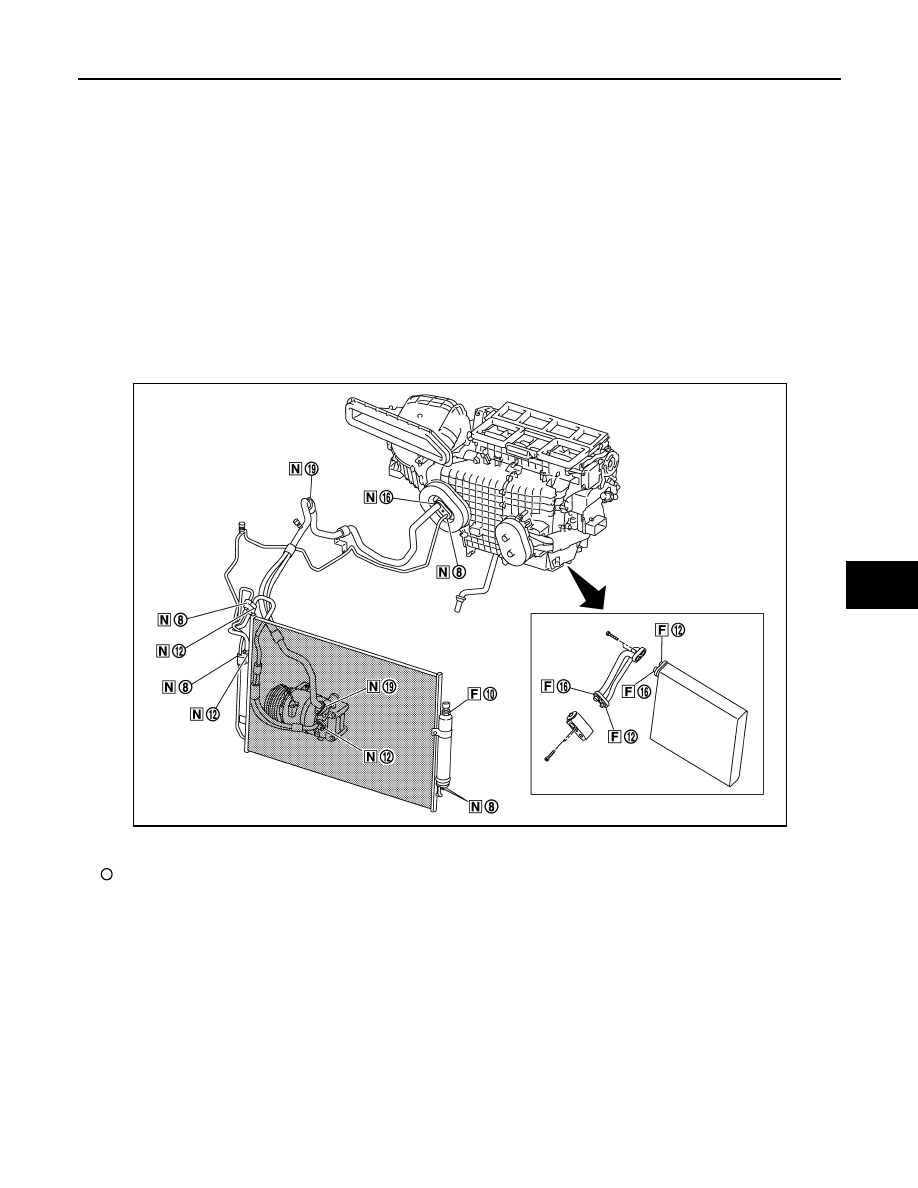содержание .. 1474 1475 1476 1477 ..
Nissan Murano Z51. Manual - part 1476

PRECAUTIONS
VTL-75
< PRECAUTION >
[WITH 7 INCH DISPLAY]
C
D
E
F
G
H
J
K
L
M
A
B
VTL
N
O
P
• Never intentionally drop, puncture, or incinerate refrigerant containers.
• Keep refrigerant away from open flames. Poisonous gas is produced if refrigerant burns.
• Refrigerant displaces oxygen, therefore be certain to work in well ventilated areas to prevent suffo-
cation.
• Never pressure test or leakage test HFC-134a (R-134a) service equipment and/or vehicle air condi-
tioning systems with compressed air during repair. Some mixtures of air and HFC-134a (R-134a)
have proven to be combustible at elevated pressures. These mixtures, if ignited, may cause injury or
property damage. Additional health and safety information may be obtained from refrigerant manu-
facturers.
Refrigerant Connection
INFOID:0000000005517178
A new type refrigerant connection has been introduced to all refrigerant lines except the following locations.
• Expansion valve to evaporator
• Refrigerant pressure sensor to liquid tank
O-RING AND REFRIGERANT CONNECTION
CAUTION:
The new and former refrigerant connections use different O-ring configurations. Never confuse O-
rings since they are not interchangeable. Refrigerant may leak at the connection if an incorrect O-ring
is installed.
O-Ring Part Numbers and Specifications
F.
Former type refrigerant connection
N.
New type refrigerant connection
:
O-ring size
JPIIA0453ZZ